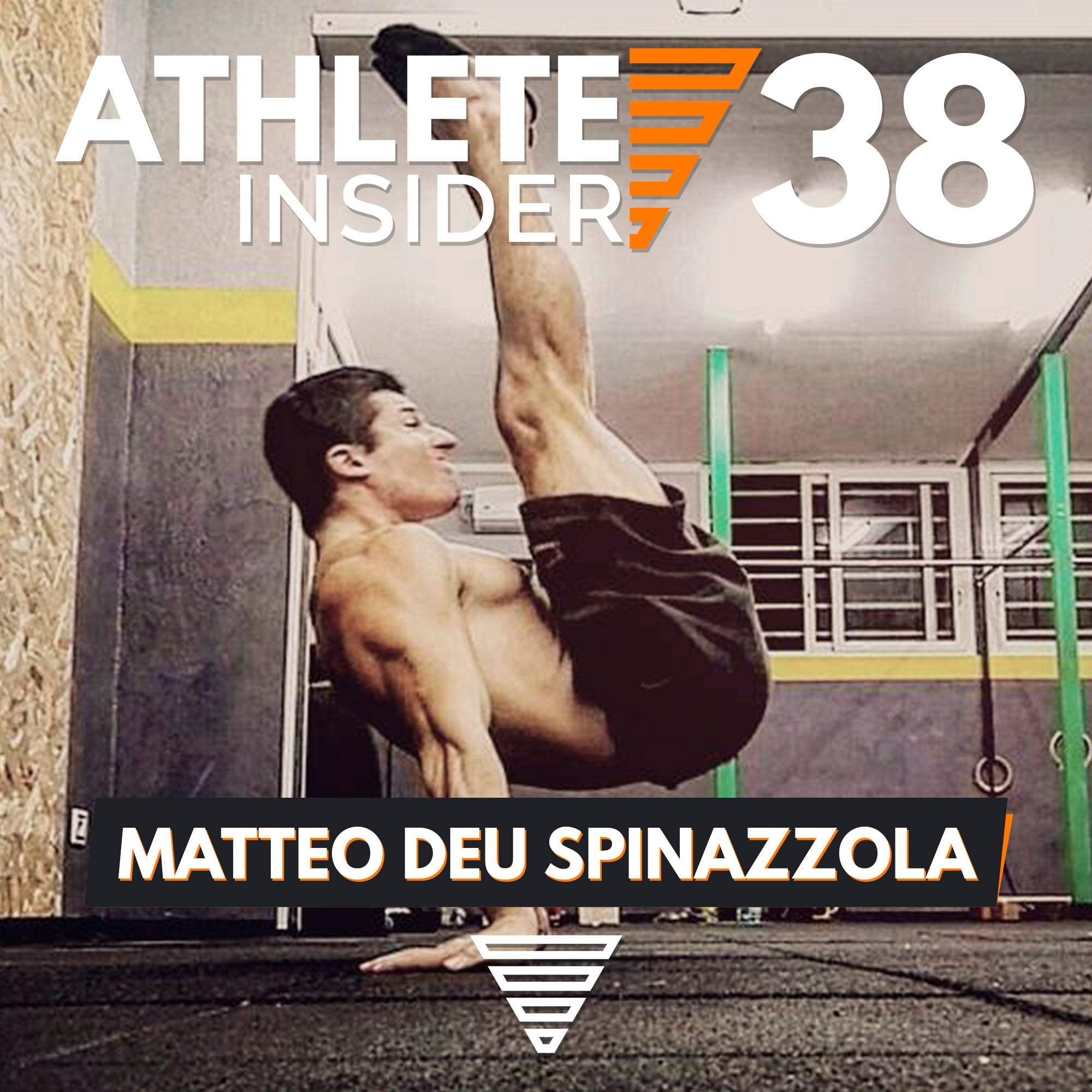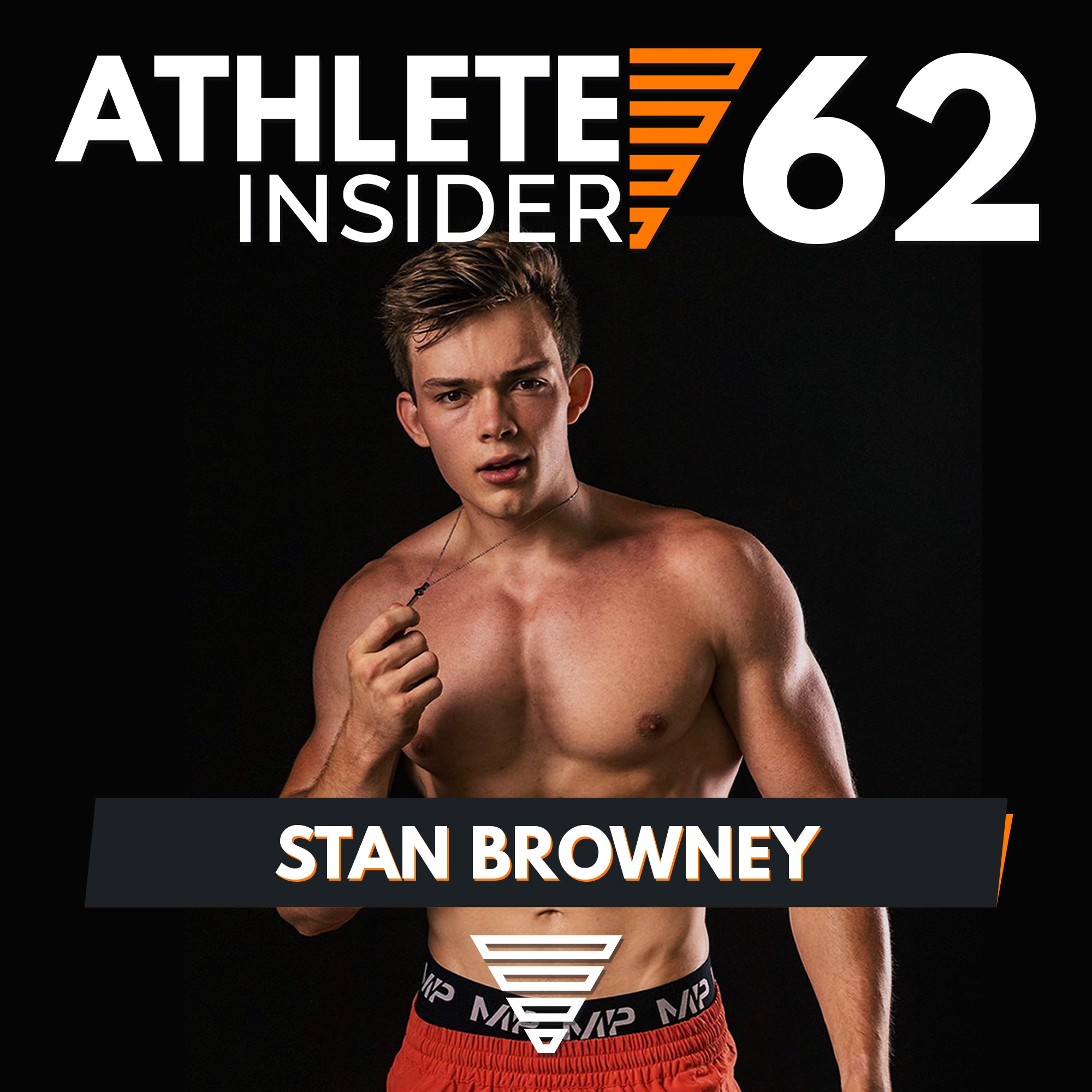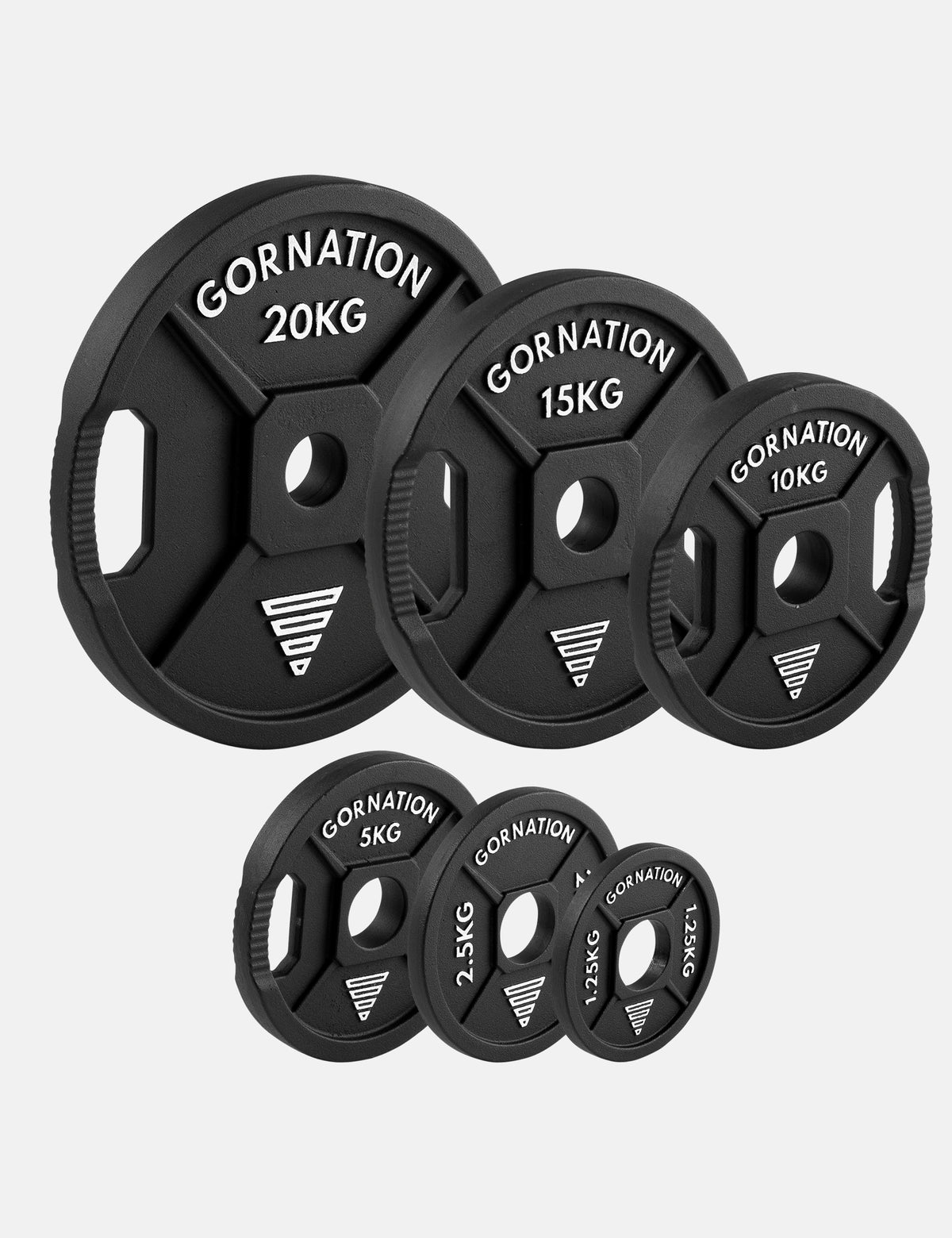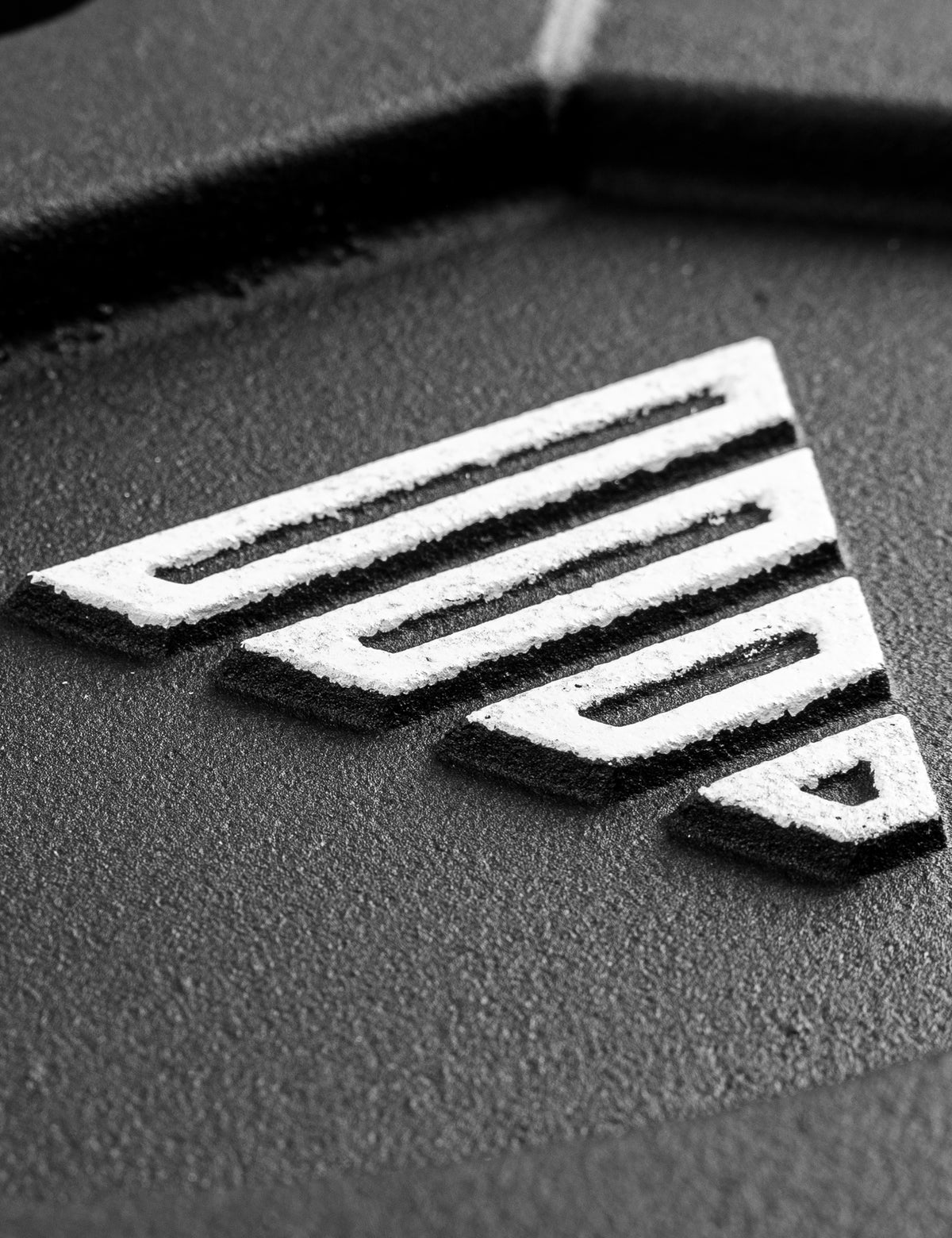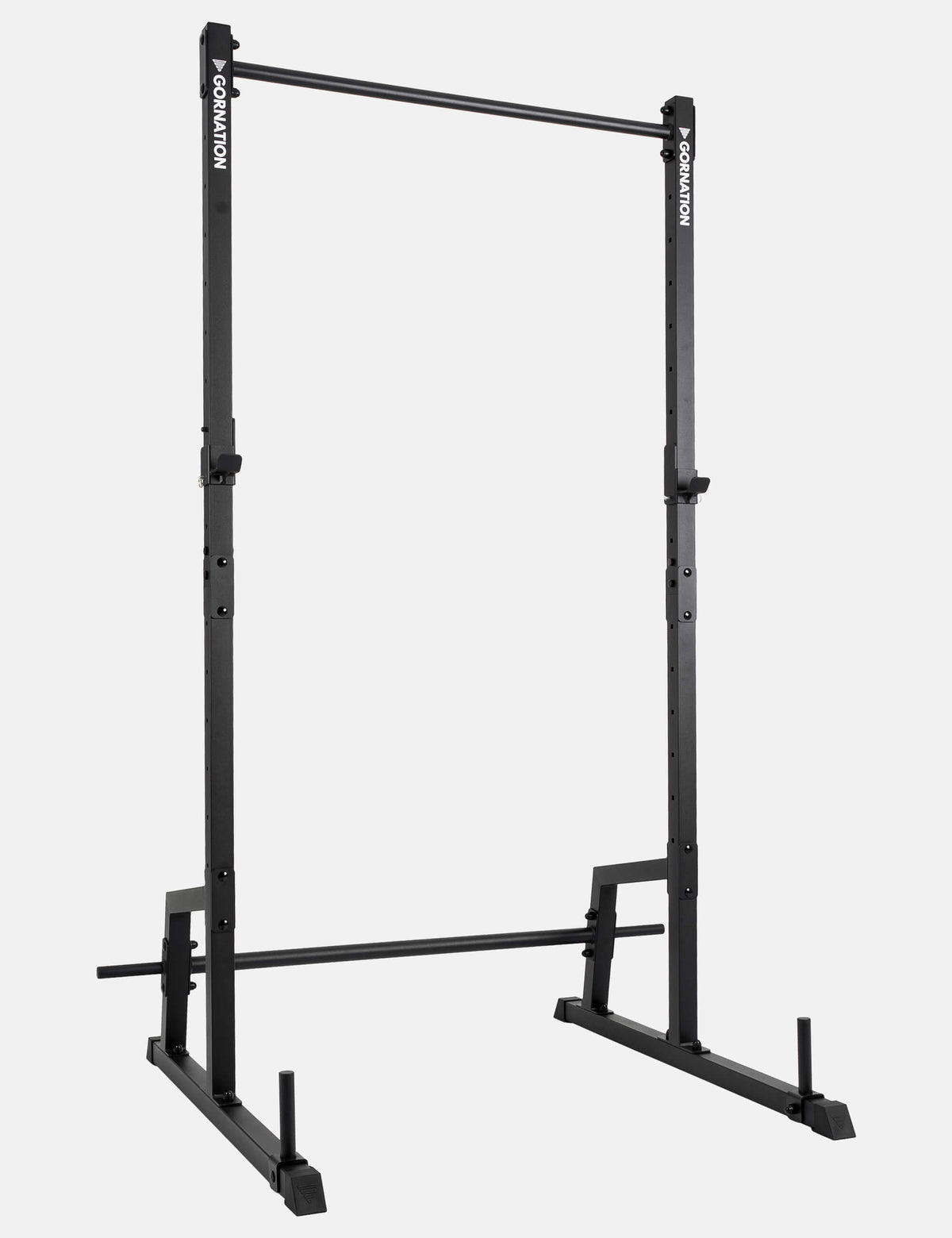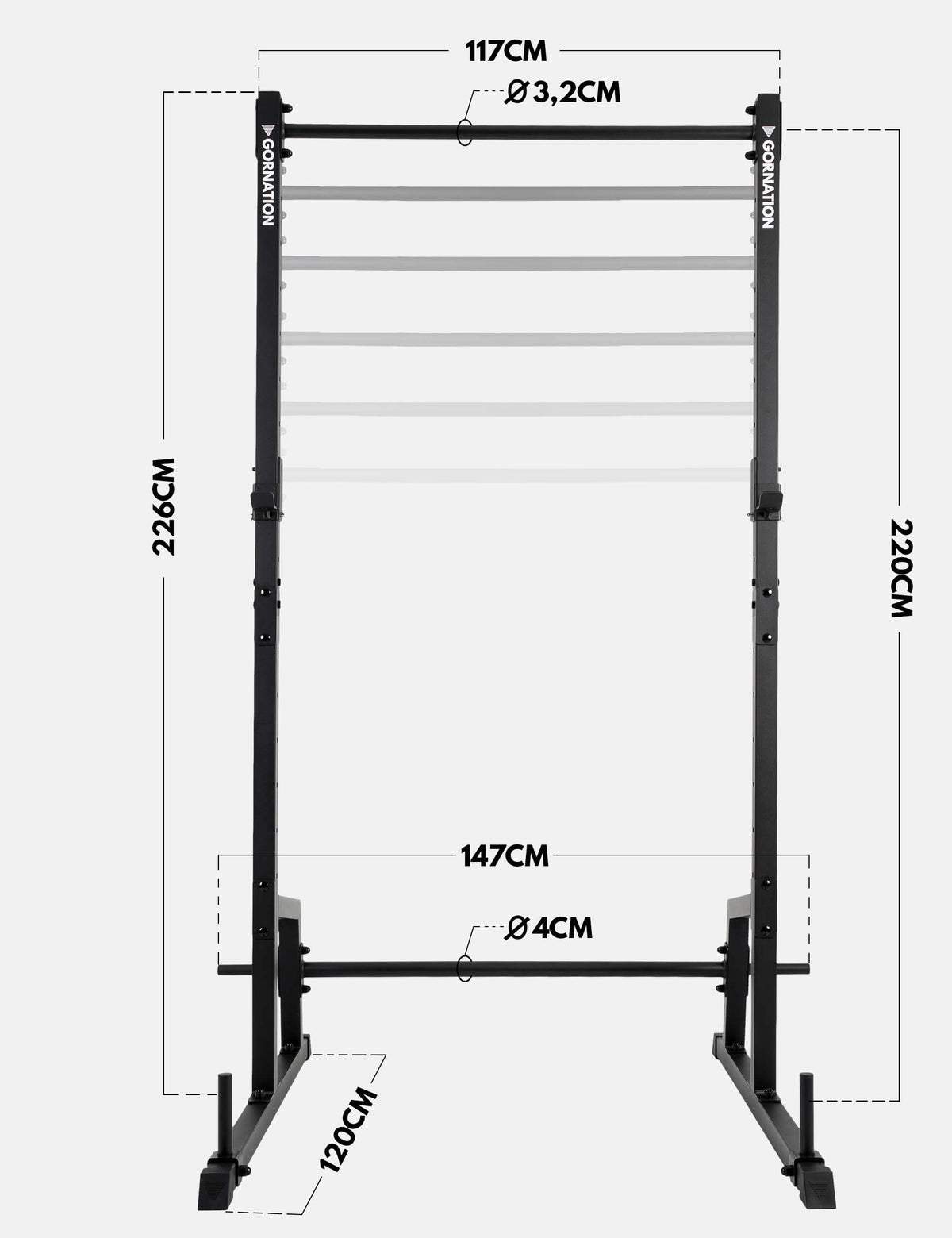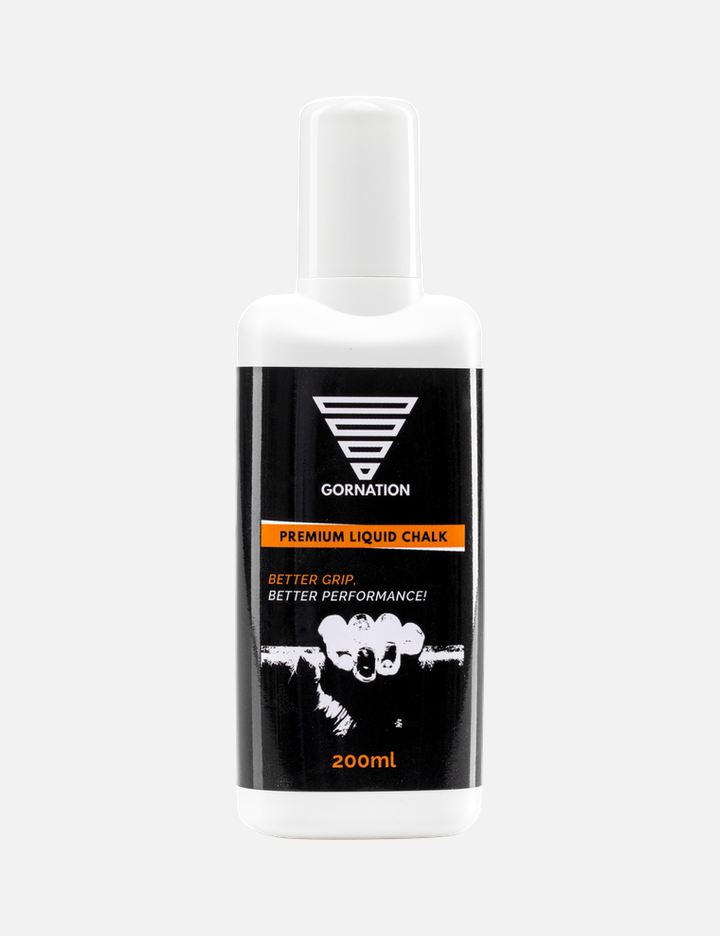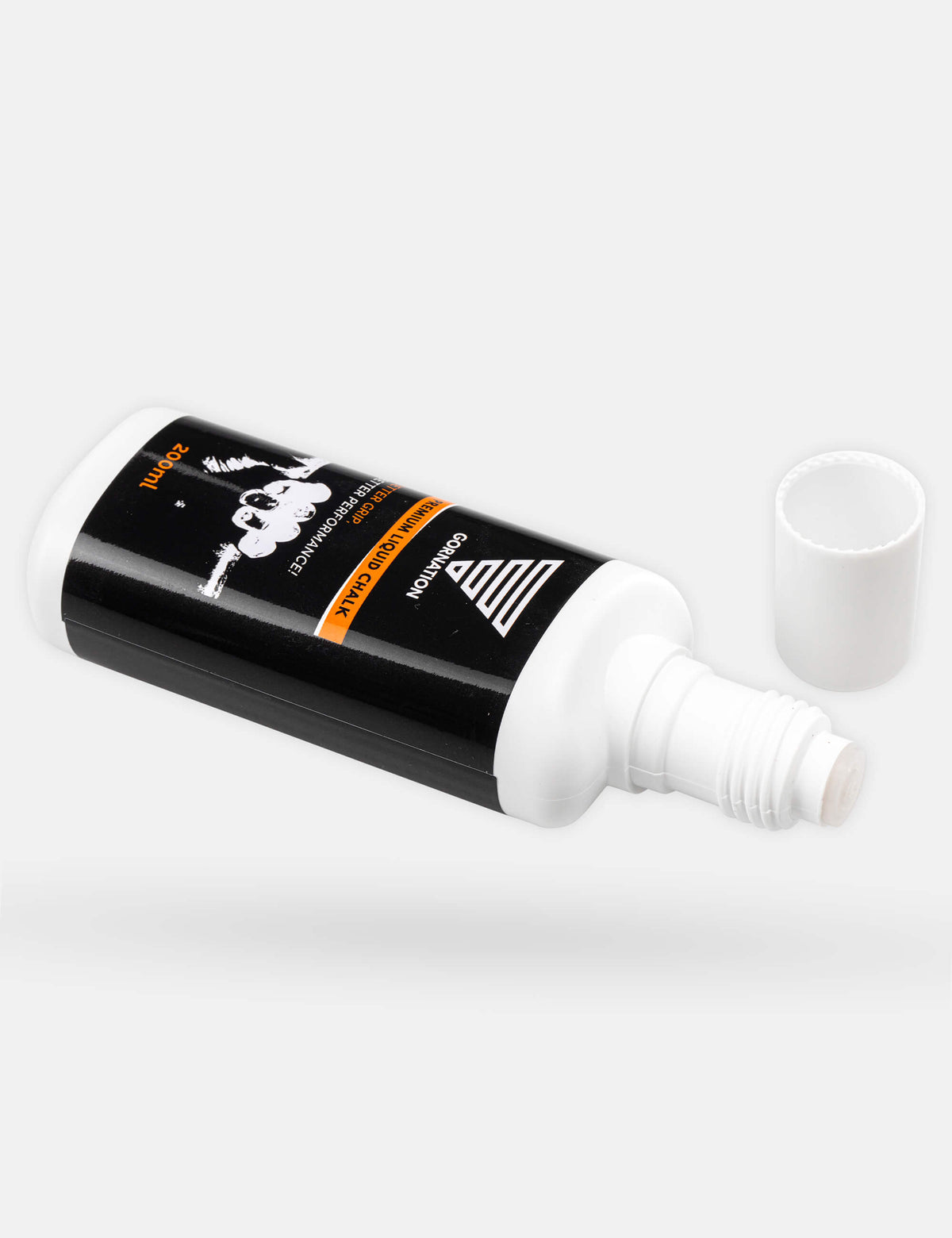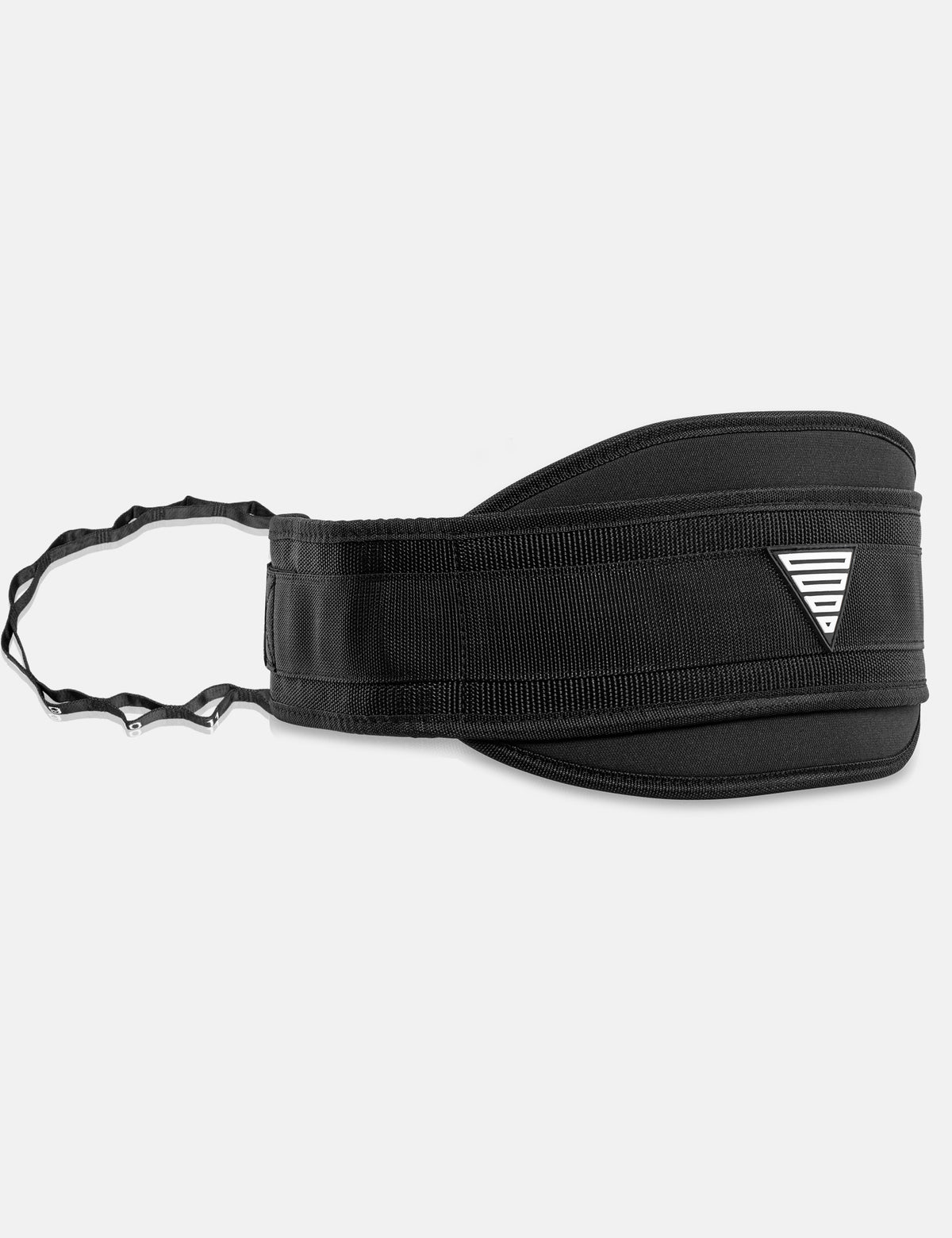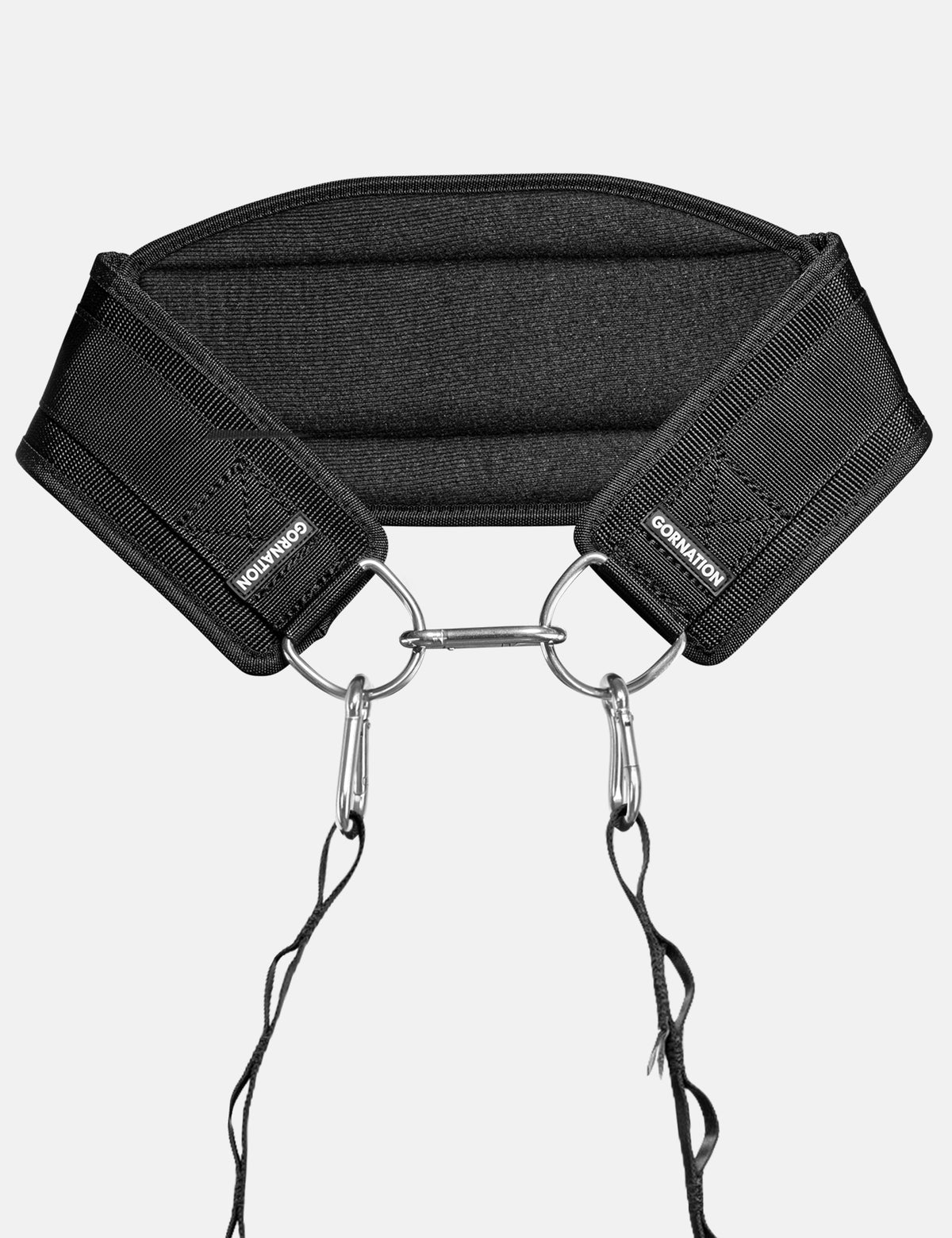NIK TIBUSEK | Weighted Calisthenics, Statics & Deloads | Interview | The Athlete Insider Podcast #56
View the interview here:
Or listen to the interview here:
The text of the interview (translated automatically):
I really wanted to do that that muscle up and i still i think i still have that one video of when i did my first muscle up and i was so yeah so screaming around i think everybody knows that feelingyou gorillas welcome to the athlete insider podcast by gordon nation my name is phil and today's guest is one of the most successful calisthenics weighted calisthenics coaches in germany and austria somebody with a lot of experience in this field somebody with an expiring story and transformation himself i'm really happy to welcome you to the show nick t busek thanks for that announcement happy to be here so we were talking about this podcast episode for a long time already uh and i felt like it's the right time uh you guys you listeners appreciated well the the last episodes where we shared a lot of content about programming about like deep deeper stuff i would say um deeper sports scientific stuff so i'm really looking forward to an episode full of content because i know nick you're somebody who has a lot of knowledge who invested a lot of uh yeah time and money in his uh in in knowledge in in his uh in your sports career as a coach so um yeah i'm looking forward to you to to share a little bit of your knowledge i'm happy to share let's get it on awesome so yeah but first for the people who don't know you do you want to present yourself who are you where do you come from well i'm nick um i think for the calisthenics community i'm an old man and with my 30 years of living herei'm into this since 2013 pretty much i think i started like like everybody in that in that time i saw some some bar stars videos and i was into it and um yeah that that's pretty much the stuff that i yeah why i started then um i started training with some friends that escalated a little bit um we brought up the at that time biggest group ever in germany with calisthenics veteran some people may still know that one um maybe the the old dogs um and uh yeah we had very very big group trainings that transformed into a sports club where i had to jump into into coaching because of that and so that's that's when i started really learning about coaching in 2014 um and from that time on it it evolved by itself um more or less and um that's pretty much the the background that i have um now i'm i'm training for myself since 2013 coaching pretty much at that time started somewhere there i can't really say that because i wasn't really into that it happened more to me that i i planned it but um yeah here i am now um that was actually in germany now i live in vienna um so you see me here in the team alphabet um jim right now sitting here some people may know this one from the wob league and um yeah that's that's that's the short version of it i hope that helps definitely uh something like as you said you were really an influential person and the german calisthenics scene uh brought together a lot of people in in wesler um uh yeah also people coming from different cities from uh further uh to train with you so uh yeah you really uh left your footstep i guess uh in in the german calisthenics scene and um yeah tell us a little bit more about your background you also what i meant at the beginning with your uh transformation i still remember the the photos that you share from from the the older no the younger you um to to today i think the the physique was a little bit different tell us more about your physique transformation well yeah that was definitely a little bit different to to who i am now um actually in the beginning when i started um trading calisthenics i was at around about 115 kg of body weight and i'm um 186 centimeters um tall so you can imagine i was pretty fat um before that i was actually 130 then i went into the german army and as it is in the infantry they really damage you so i lost like 15 kg but the food is also [ __ ] so you don't lose that much um so when i left the army i was like okay i wanted to learn a pull-up because in the army i didn't learn it because i didn't know anything about training and yeah that was a little bit difficult there so that was something for me that i really wanted to learn and i started off at a little um at a little yeah it was not really a park it was more like where the children's play and there was something that you can call a pull-up bar but it was not really a pull-up bar and i teach myself to do my first pull-up that was actually i think it must have been in some somewhere in january in 2013 it's pretty pretty close after i saw my first bar stars video and um from there on it went on i trained a lot uh i didn't know anything about it actually i i did so much can i say bad words you can okay i did so much [ __ ]back then but i think everybody did it at that time because nobody knew anything about training at that time i think you remember that time too so you just trained and um the harder the better and i went down to 90 kg of body weight which was i think the first time in my life that i had a six-pack and um that was all i wanted at that time but during that time i really fell in love with the process of training and i was like [ __ ] it's not not not just just looking good anymore i just i just love doing this so um yeah that there were there was actually the the time when i really went into into this passion i really felt in love with just training getting stronger having a good time with friends during training and all that stuff i think everybody who's who's into into training knows how that feels in the beginning especially in the beginning and um from there on i um always had a little bit of weight is going up weight is going down and all that stuff because once you have been a little fatty um you don't have that completely the transformation is not completely done after you lost some weight usually yeah it takes some time to to get into these new eating patterns and really yeah make them yours and it took some time for me to get into these eating patterns and right now i would say like eight years lateri'm i'm here and i'm pretty happy with what i have i'm i'm at 100 kg round about um right now um sometimes more sometimes a little bit less i'm able to eat sometimes some ice cream um and also having having a good good good steak or something and um i i actually right now i'm at the point where i enjoy life and training at the same level so um i would say i made my transformation into this um i'm not a completely ripped athlete like everybody wants to be on on on the on the on the gram but um actually i have something that i can keep on one level and i'm happy with that i would say cool in um in the beginning when you were watching the bossas videos was the main motivation the physique was it to look good or was it to be strong or to impress the girls or what what was it you know like i would say it was kind of looking like them because i've i've never looked like that um except of i think it must have been when i was 13 or something round about that age um at that time i was was a pretty good runner track and field and stuff like that and um that was the only time when i was pretty much lean in some kind of um and um it was mostly looking like that and there was also this thing i wanted to do a muscle upa classic i was really into i want to do a muslim i really want to do a boston up i i was always like okay a front lever that looks cool yeah a flag also looks cool but i really wanted to do that that muscle up and i still i think i still have that one video of when i did my first muscle up and i was so yeah so screaming around i think everybody knows that feeling but i think it was these two things and that changed over time um after after like i don't know like two years when i just had that physique that i wanted um i changed that into i really want the performance and that that really changed the complete way how i approach training because from that point on um i had to learn a lot more about how to get really strong and how to how to develop that without getting injured and all that stuff because everybody knows that we all have that shoulder issue once in a time i don't know especially in calisthenics um and i also had that and um but i learned about it and so now i can i can actually deal with that a lot better don't kill myself in training um that's what i teach our athletes and um that's that's the thing that we um actually have we all have to learn that during the time um once you have the physique you understand okay there's a little bit more about that at the beginning okay get it you already said uh calisthenics the the way we train like the the way um also the professionals trained today changed a lot uh over the years and um yeah it has to do with with with of course the sport developing with people like you offering coaching etc but back in the days like everybody was just go hard train as much as you can like every day all day every day you know like all these quotes um and can you give us your perspective how the sport changed and um what what are the good things that came with it um the the the more scientific way approach of of programming of like all this program structuring training structuringi would say it's a lot easier to get strong in a short amount of time right now because there's so much more knowledge out there when when we started there was nothing especially for me i didn't i didn't know anything about training had no no no background or anything i was like okay what's youtube giving to me and that was actually some honeybell for king videos and nothing else and you you may remember that the the mad bars routines yeah yeah like that it was like collecting trade cards like i was collecting them uh and trying them out yeah yeah and yeah i tried so many of them and i failed on so many of these routines like i don't know i think i could couldn't do most of them now i mean they were like yeah do do 50 pull-ups who the [ __ ] can do 50 pull-ups honestly yes you have some some world-class athletes who can actually do that but most people probably will not get to that point and um yeah i think it's a very good way that this changed that it is a lot easier to get into the sport um especially as we yes we have more information but on the other hand it's it's i think it's a little bit easier to get immediately to the right people who give you the information because um at that point you had people like like all the youtube stars um on on calisthenics they had no clue about training at all i don't i don't want to offend anyone but it was it was like that at that time so they just gave you some routines they thought that's good but it was not like that was really good you know and nowadays it's a lot easier to get your entry into this and develop further and i think that that's something that changed so well and um we're not done with that not not even close but it's so much better and i think what also changed a lot was like a lot of people in the beginning were like strictly calisthenics it's not allowed to do anything else and it's good that this approach changed a little bit that people allow themselves to actually do something else i mean stuff like rotator cuff work and maybe some hp to develop some more strength to do a handstand push-up and stuff like that you know people people are a little bit more open now than it was then people were so against weighted calisthenics in the beginning when i look at that how dare you put weight on it how dare you to do squats that's not calisthenics yeah bro but how are you going to load up an air squat or something yeah we have to do business quotes yeah but that comes to an end too so i i think you remember that time um it was pretty hard to bring that into into the sport and nowadays people are a lot more open to that and i actually love to hear that and to see that that people are um ready to to to open himself a little bit more up into this and from this on the whole community evolves from that and that's something i really enjoy so um i think that's that's some very very good stuff that it is like that right now because information is out there everybody can get it of course it's for most people very very hard to cut the right pieces out of what they really need out of all that information it's for a lot of people it's very hard to get the right information in place that's something that's of course it's harder now because there's so much information you don't know what's right what's wrong what's the right one for my situation right now but in the end everybody's free to get some help at that point you know and um there was something that also was in the beginning very very hard for most people everybody was on that i'm the lonely wolf track i don't want any help so and that changed also a lot in the community and that's also something that i actually yes of course because i make my living out of that but on on the other hand you know the whole community evolves from that because everybody's getting better and people are inspiring each other by their um approach by their achievements and i think in the end the whole community evolves from that a lot so everybody is profiting from that that it is growing so well right now i hope i answered the question definitely so if somebody is answer asking you yeah nick where can i get some some information to start and you like out of some reason you don't want to give him uh the advice but what would you advise to our listeners where can you get some good information for the beginning of course later um or if you have some some um competitive goals or if you want to do it like really with 100 and then coaching of course is the way to go but we will talk about that later as well um but like for a beginner where do they find the best information in your opinion of course in my podcast yeah um actually yes we have the strength and skills podcast which is um very much about information and um we give a lot of of info i always tell people if you listen very closely to the podcast you don't need our coaching okay we're just spying um but on the other hand um i think to get information for the beginning it's mostly um needed to understand the principles in the beginning so that there are like let's say six movements which is vertical pulling and pushing horizontal pull pushing and pulling and for for the lower body pushing and pulling and when you have that and add some some unilateral movements to that which is one leg or one arm movements then you're very good in the beginning to to to have all that done so um it is for most people it is in the beginning like they want to do everything and it's very hard to get all the informations um in because yes there are some places where you really can come from when you're a beginner um like like all these reddit stuff um and all these these internet platforms where you find some stuff but i think the most important tip to get here is don't over complicate make it very simple make it really simple keep in mind you don't need to train like seven days a week you don't for four times a week is very much enough if you do it right and actually we we are sharing all that stuff in the podcast and i wouldn't say there is this one source that you can go to where you find all the information needed that's actually right now maybe the the um the issue that we have in the sport that it is not there is no guide in the beginning maybe we should bring up a guide a donation guide for beginners let's do this yeah but it's it's a big problem like um or what is what means it's a big desire i guess because uh calisthenics is a sport which has the the um the danger or the the possibility to become like gymnastics where people are afraid of starting because it looks so elite and so uh professional and that's a risk in my opinion because as a beginner today i would still even though there are a lot of information i would still be kind of lost between the pros who share something like reps and reserve and all these terms which i don't understand as a beginner which seem like extremely complicated and um on the other hand the people doing uh like reps until failure and just uh yeah it's difficult as a beginner i think yeah so to answer the question in the end i wouldn't say there's one single source that's really really well that's actually an issue and i'm very sad about it when i realize it right nowyeah like i'm always thinking that if we um if we are kind to beginners it's the sport will grow because otherwise like uh of course i like the community events where every year we meet up everybody but i don't feel that the scene is like growing extremely like it's maybe it's not necessary to where to grow extremely big but um i still would wish more uh new faces new uh new people in the scene so this is why i'm thinking i'm always thinking how can we do something for the beginners because it's hard to reach them but they need the most help i guess yeah absolutely absolutely yeah we need to get that but that's that's something we can uh yeah we can think about after the podcast otherwise it will be three hours um you talked about unilateral exercises which is something that um i don't hear a lot um why do you think these are important and why do you like why do you give them to your athletes and to your coaches um actually that's something um uh when when you look at um i think in the first we first have to explain what's in a unilateral movement so in the end unilateral uni that's one lateral is always on the outer side of your body so um you can see that's an arm or a leg so it's one arm one leg so that could be something like like a lunge like like uh an overhead press and when you look at that you usually have to load that up with some extra weight yes that's not completely calisthenics i know that um to tackle that in the beginning but um how could you do a one arm thing overhead i i i don't know a lot of people who can do actually a one-arm handstand push-up so um also a one-armed handstand pike push-up will uh one-arm pike push-up will be very very difficult but to press something above your head which can be a dumbbell maybe at 10 kg or something especially when you're a girl maybe a guy starts at 20 or something i don't know wherever you start yeah it's crucial to be able to stabilize your arms and your legs only at one point you know that you only have that one arm that has to be stabilized um that's mostly for health reasons um because at that time you can really focus on that arm or that leg and um that's something you have a transfer effect from that when you are able to stabilize one arm one leg very well usually that helps you a lot to um um perform other exercises better so um especially when it comes to two legs i'm very very very a big big big fan of doing unilateral stuff as um when you look at the hips it makes so much sense to be able to stabilize the knee as that's something you hear a lot of very very often from calisthenics athletes yes but i [ __ ] up my knee doing some stuff i [ __ ] up my back doing some stuff there and that mostly comes from they and they don't just don't know how to stabilize that stuff and um this is why i always give stuff like that to our athletes it's not that this is a main lift so it's not the first exercise that we start with on the on the training day so you may do some some squatting patterns yeah maybe a back squat um and after that you train some single leg exercises which can be a lunge which can be a step up or if you're a little bit more experienced which can be a pistol squat so i see these things as some assistance for the bigger movements um which help you to stabilize this area very well and the same is for the upper body um when when you do maybe one arm rows on the rings at that point huh go get your carnation ringsi'm a marketer when you do the one-arm rings ring rows that's also so helpful because at that point when you pull back you can even squeeze a little bit more into that than if you would do it with both sides so the little squeeze here and the rotating um from from your spine at that point is also a very very healthy movement at that point to keep you healthy in in here so i usually use that stuff not to get really really strong um because that's mostly done with very heavy um bilateral exercises so if you want to do a handstand push up you're not gonna learn the handstand push up from the one arm overhead press but the one on overhead press will teach you the movement pattern in a more healthy way so it is a very good way to do it afterwards when you did your handsome push-up training stuff and then this is maybe some assistance you do um later on you don't even have to do that every day but once a week would be a good um choice so that that's something i definitely always recommend to the people because it keeps you just happy because you can focus so much on the movement and you have to keep everything stable at that point you know i i mean everybody who did an overhead press knows over one arm overhead press i'm sorry knows how much you you start bending and all that stuff so at that point you also learn so much about how to stabilize your spine which is actually something that is so helpful in your real life which is a little bit out of of just training you know when you have to do something else in life um this stabilizing the spine will also something that you definitely we need you will need that when you're getting old so you profit from that so much so in the end um all this stuff is not only about the performance right now it is also about to keep you healthy so that you have a performance when you're old because i actually myself i want to be able to do my handstand push-ups when i'm old too like a 60 years old man doing the handsome push-ups looking at the young guys come on guys when i was always you i really killed that the classic onesyeah but of course the healthy side that's it nice like unilateral exercise i often heard then them in combination with fixing disbalances like uh it's the same thing right pretty much um but the the other hand is a lot of people um start doing them when they're already injured i would say when you are injured go to a physiotherapist that's that's not my job i wouldn't tell you anything about that because i'm not that's not my expertise you know of course i can help a lot of people with that stuff and we do that with our athletes too of course but if someone comes to me hey i'm injured can you help me i will say no go to a physiotherapist but i actually always like to tell people to do some stuff as pre so that you just don't get injured so um of course sometimes you will find some stuff where you just have disbalances and um of course the unilateral movements help so much with that um but it's not like yeah but i did my my one arm rose and it didn't fix my disbalances yes it's not not like that that's the the magic pill or something a lot of times you have to go really into detail with that stuff this is why i'm not um saying yes that's going to fix all your disbalances specific because it's not going to be like that you have to look at it very individual when it comes to that stuff and really go into detail with it okay because my next question would have been uh if i have like a weaker left shoulder do i uh when i do the unilateral exercise do i need to uh lift heavier with the left shoulder or is it important to keep both weights at the same weight like uh this stuff um i would actually always start the with the weaker side and um maybe let's say you have a rep range yeah like like you say okay i'm gonna do something in between 10 to 12 reps on that side um i would start on on the the weaker side do as many reps as needed for your given goal and then do this exact same thing with the stronger side okay so that that would be my my approach um the difficulty at that point is when when you go into science with that there are also different approaches on that but that is actually the approach that i always would do because of course um i would always always try to make both sides as equal as possible but we also always have to keep in mind you will always have a stronger and a weaker side it's just in a range you know when let's say when someone is able to dosix one-one pull-ups on the right side and it would be five on the left sidestill do your six on the right side and do your five on the left side that's not a big this balance but when there's just one on the left side and six on the right side that's something that i would look into and i think that's also a very important part um here because people tend to really over analyze that and in the end you will never have a completely symmetric body it's it's not going to be like that because you are maybe right-handed and are doing all the stuff in your normal life with the right hand so there will be a difference to the left side of course when you're playing football and your shooting side is the right side yeah guess what then probably there will be a difference in between left and right leg i also have that when i look at my legs my right one is bigger than my left one and it's even stronger so yes i don't i don't have to completely make it symmetric but of course once i see that it leads to a problem then i definitely have to work on it right now i'm working on it with my left leg there's actually an issue and so i have to work on that before we dived into this question uh i we you were talking about the four weeks that it's totally enough to talk to to train four times per week which is really interesting for me and i know in a podcast i can never expect you to have the cure and the solution for everybody every listener if he does did this he will get the result this um but i would be interested in the interest in the perfect week for you in a like in a program four weeks for four workouts in a week how does somebody should how should somebody train to get good results in weighted calisthenics um is the goal strength or hypertrophy uh good question but because we received a lot of questions uh concerning uh good physique and shredded physique uh i would go with with hypertrophy in this case all right because there is a little different that we have to consider here um okay let's go into it um hypertrophy is actually something um we want every master group be hidden like with a frequency of at least two times a week so when you look into the science usually um a frequency of two to three times a week is best when we consider that probably all of us will have a normal life too we do have work we do have maybe school university some stuff with the family that would it probably will not be something that we will be able to train seven days a week for the whole year so for me it's always something i want people to be consistent with their stuff and having a four day week of training mostly works very well for most people and this doesn't mean that there aren't people who are training less or more and it also um i'm coaching people who are training more and who are training less than that i just say that's a pretty good middle way for most people so that that's what i'm saying four times um the the frequency of two of like let's say we want to hit the back two times a week leads to okay we at least have two times a week where we have to hit the back and of course then we also have to hit maybe the chest two times a week then i'm sorry to say that guys but i also train legsof course you have to hit the legs too and they have a front side and a backside so i would split that up personally because i actually would say to keep it very calisthenics we hit the back side with some nordic curves and as we are doing weighted calisthenics um i would say let's let's do some back squats also added weight on a squat um yeah whatever you use there you could also say let's do some pistol squats it doesn't matter it's just about how you hit the muscle groups at that point so right now we have the horizontal pushing and of course um with the chest which is only hidden in the horizontal way so we also have to think of like i said in the beginning we have vertical pulling and pushing so we usually would have to do some maybe some some some vertical pushing to add that to the chest stuff so there would be a possibility of maybe saying okay we can we can split stuff up if we have a frequency of each muscle group that we want to hit of two then we have to consider okay how much is usually needed to make a muscle grow and at that point science says okay it usually would need only one stimulus so it would be possible and this is something please don't misunderstand me it would be possible from a scientific way to do just one set and give the muscle the right stimulus but probably that won't work for most people it won't work because the stimulus from one set you would have to go so hard into failure to give that stimulus you probably will not be able to do it and i'm not saying that to to make you being the hardest man ever it's it's not because of that it's probably more because most humans are just not able to do it i mean if you look into the body building world which are absolutely the experts of building muscles there is one guy his name is dorian yates a very old bodybuilder but he was known for um high intensive training and he had just one set but when you look into the youtube videos you do understand why he's just doing one set that guy is killing himself and actually i definitely had hard training sessions in my life but i probably never came to that level and i probably never will come to that level he's just that that's madness so in the end most of the time you have to look into it because there's also another science view of that that says okay somewhere in between let's say13 to 20 sets per muscle group per week is something where the muscle grows very well because at that amount of sets people are giving the right stimulus and that's something you can cut it in half and do like let's say let's say we do the middle and say 16 sets of the uh muscle group per week so there's one day we do let's say back um we do like eight sets for the back and there's another day where we do eight sets for the back with what can mean like we have on the given day three three sets of pull-ups um maybe three sets of tucked front lever rows and maybe like two sets of one arm rows on the rings which would be a very good back workout for most people if you do it hard enough and yes everybody is like but i can do so much more yes you can but you most of the time you don't need most of the time people are training themselves into the ground and they just just don't need it to grow muscle no if you go um close enough to failure and this depends a little bit this is also um the big difference to when you want to go for strength when you go for strength you don't go into failurethat's very important to understand when it comes to muscle growth failure is needed most of the time at least once a time i wouldn't go for failure in in pull-ups but i would actually go maybe for failure in in the one-arm rows because that's the exercise where you can get at least the the chance to get injured is the lowest you know i think that's very important to understand at that point that you go for failure with the exercises which are not so high in the risk to get injured because every time when you go into muscle failure you are at a high risk to get injured that's very important to say at that point so for you to keep that in mind frequency of two means we cut the amount of volume in half do one half on the one day and one half on the other day and when you over time learn okay um this is not enough for me you add one set per weekthat's easy start low go high and then in the first week you start off with like 16 sets next week 17 next week 18 then you have 19 then you have 20. maybe then you feel like okay i should deload which is a week of just cut the volume in half have a lower week rest a little bit come back with more energy and start again 16 17 18 19 20. so that that would be a very good way and you can use that system for every muscle group that you are actually doing so that could also be done with um the frontal with a chest at that point we also have to consider or yes there is something that's called overlapping volume so everybody knows that when you did some heavy dips your shoulders are [ __ ] too so you're probably not that good enhancer push-ups afterwards because you're already tired and that's called overlapping but volume because the same muscle groups are already used at that point so we have to to keep in mind okay some of that stuff will tire us and it's the same like like when you did very heavy pull-ups your whole shoulder griddle is tired and you probably will not do the new dip pr or handstand push-up pr if you do it immediately afterwards probably not so you have to keep that in mind also that this will interfere with each other so um when you have like a pushing day where you have a little bit more focus on the chest and then maybe um another day where you have a little bit more focus on on let's say shoulders which is vertical pressing a little bit more that doesn't mean that you don't do chests that day you could do the handstand push-ups and maybe some some normal push-ups afterwards maybe waited i don't care yeah um and to to to get that to the right point you could also do the heavy dips on the other day and do some some pike push-ups afterwards which still gives some stimulus more to the shoulders but it's not that heavy so i would always start with the more heavy exercise and afterwards a little bit lighter like like i already said with the pulling stuff when i said okay let's start with some some pull-ups some some some uh touch front lever stuff and then do some some one-arm rows so that would be a good way to schedule a training during a week so and the same stuff you can also do for the legs start off with heavy squats do some disney sports afterwards and maybe some [ __ ] squats in the end would be an amazing possibility to to really kill your quads that day and you just did three exercises and um that that would be a very good possibility to to to do all that stuff and you have to keep in mind start low with the volume go higher um but it's also very important um you mentioned that in the beginning some stuff like reps in reserve rpe um to mention that a little bit reps in reserve is pretty much the same as rpe we have a complete podcast episode about it but to keep it very very short reps in reserve 2 means you have two reps in reserve you could do two more reps rpe 8 is the same as reps in reserve 2. so the whole thing of rpe ends at 10 if you if you had an intensity of 10 you you killed yourself during that set you couldn't do one more rep there would be no way to do that that's a 10 and for you to to know to give the right stimulus to the muscle you have to keep your sets in between a range of somewhere in between 6 or 7 to 10 in an rpe rating system or reps in reserve four three two and one or zero so that that's that's the very important part to keep that in mind so that it should be heavy it should be hard you need to give the right stimulus to the body there are exercises that wouldn't go for a ten like a back squat killing yourself there is something the risk of getting injured is too high kill yourself later with with the pistol squads and um the cc squads no issue with that maybe with the pistol squads okay but let's say lunges that's an easier one that's not so demanding for the knees um but that's also very important so for you to keep that in mind frequency of of two during a week um total amount of sets up to 20 and the right intense in intensity yeah coming up from an rpe 6 up to up to 10. so i have to say one thing to the 6 in rp6 this is only when your rep range is very lowbecause when you do um like two reps on the back squats with 200 kg let's be crazy um and it would be an rpe6 for you the stimulus is so high on the muscle that it still will growwhen you do like i don't know let's say push-ups and you did it with i don't know let's say 20 kg on the back and you still have an rp of six it's probably not growing so there i would go for a little bit yeah like like a higher rpe that's very important to say there are exercises that you shouldn't go for a high rpe and there are exercises that you should go for lower rpe but that's a complete big field but i had to mention it interesting so you also talked about the deload week which is uh makes sense in every x-week you will you will tell it but you said that we cut the volume in half you said um does that mean we do the same amount of sets but uh cut the the rep range in in the rep number in in two or how is it meant that's that's very um very individual because um deloads really depend on um on in which phase of your training you are right now so um when i have someone who's training for competition in the for which is probably one rep max i cut down the intensities so they do it lighter they do the same volume they do it lighter when someone is in a hypertrophy phase it makes most of the time a little bit more sense to cut down the volume which means less sets and um work from there because they're like you you could say that like two different types of um fatigue like um there's the central nervous system fatigue which is um in the end the central nervous system is the system that wants your body to stay alive so when that really gets tired that's when you have less energy output and that's actually what you usually feel when you had a few weeks of really hard training when you're like mentally really exhausted and like i'm done i don't want to go into training because i'm so killed everybody knows that it's different to just having a little bit of pain and being a little bit yeah just damaged you know that's different everybody who trains knows that and um usually you have this central nervous system fatigue a little bit more when you have higher intensity so that comes with higher more with real strength training when you come for hypertrophy it's more like the muscles are tired and also this loads up and also fatigues the central nervous system over time but not as much as as the high intensity would so um this is also a little bit depending on how much load you are putting on the spine so you can always keep in mind every exercise that loads the spine will fatigue the central nervous system a little bit more than exercise that don't load the spine so you probably are not so fatigued from the central nervous system from pull-ups because the spine is not loaded it's just you're just hanging there um you're probably also not so much fatigued from from stuff like dips you're more fatigued from handstand push-ups because the spine has to stabilize the body in the in the air a little bit more and of course with everything where you load up the spine with maybe like a barbell or something like in back squats so that definitely you will feel that this is why all the people always think about when i when i do back squats when i put them into my training that kills my training now that it's not the case that it's the back squat's false it's just you're not used to this amount of fatigue and you have to get your body to get used to it um so to get back to the pointit's such a big topic you know and it's great to to to have the the knowledge around it so don't worry yeah it's it's it's needed um to to to have that here um we usually i would usually always when you're on a hypertrophy phase i would just cut down the volume because hypertrophy is mostly driven most of the time by a little bit more volume than in strength phases so in strength phases it would cut down the intensity and in uh hypertrophy phases i would cut down the volume i have to say at that point before people come and kill me this is very individual and there are people who react better to less intensity and there are people who react better to less volume there are people who um can can keep intensity and just have to have to um do less training things and stuff like that there are so many different ways in the end i really have to say i always try to find out what's best for my individual client at that point and work from there and this is also most of the time very different from from the face that they are in so i have seen people who really recovered so well when they didn't even train a bit in a week and i have seen people who needed to train and keep the same volume but with such low intensity you wouldn't you wouldn't even think that guy trained so it's it's all there and in the end i hate to say that but you have to find out for yourselfand this is the difference or the difficulty the difficulty for pre-written uh programs etc um and all the the programs that you can get which is uh also something which is good for the calisthenics scene etc but this is the difference between a pre-written program and a coaching uh or a coach who analyzes the your your stuff and your videos and your physique etc absolutely um yes the program will work when you do it right um but that doesn't mean that a completely individual approach for you wouldn't work better yeah that's the thingthat's true nice um a question because uh the week this interview goes live is also a special week because our dip belt is finally coming online and when we uh announced it we received a lot of questions uh when is the right time to to start weighted training when when is is the right time to switch from basics body weight to weighted do you do you have what would you what would you respond to somebody uh asking thati would say that depends on the exercise um i would start immediately with back squats even for beginners of course um because most of the people i have never met a person who can't do an escort and if you put the gun on their head they are probably most of the time able to do like 50 reps on that easily so to load that movement up there's the best way to put some weight on your shoulders and do with the back squat so um i would start with that immediately um well the upper body is a little bit different because most of the people when they completely start over new they most of the time can't do a pull-up or maybe just just a few same for dips and maybe for push-ups um when you come up with that um you can't really say this is the the one the number where you can start weighted i mean we all have seen that people are doing 10 pull-ups and people are doing 10 pull-ups there's a big difference on technique and for me i always look at okay where's this where's the technique at what point is the technique is this technique a good technique that we can actually already load up would that be a good idea to put some weight on that so usually most of the time not because the problem that we have with the bodyweight exercises like dips and and pull-ups you can't just take weight away it's not possible i can't come over hey phil i just cut off your leg i think that's that that's the better weight for your pull-ups come on cut it off it's that's not possible so um we are always at the problem that we already are at a something that's like more in the direction of a maximum um attempt especially when you're a beginner so um for me i would actually recommend for pull-ups before you start doing pull-ups wait itmake sure you can do arched back pull-ups really really good archback pull-ups with chest to bar you don't have to charge the bar i know some people can't some people can but doing proper technique at least the chin over the bar with that somewhere in between 8 to 10 reps then you can start loading and start loading doesn't mean you start at 10 kg start loading means maybe 1 kg and um what i would also recommend at that point make sure to weigh yourself before because that can also be a little bit different maybe one week you had like i don't know 80 kg the other week you just had a little bit more of of lunchthen you're 81 that's already progress and next week you can go for 82. maybe then you have to load up one kg so um it's it's a little bit difficult to keep it at one number usually because it very very much depends on the technique and when you look at it most of the time it also depends on how heavy is that person when you have someone who's like i don't know 70 kg most of these people really learn pull ups very fast when you have a guy who is starting over at 90 kg of body weight he probably will not have such a fast progress on pull-ups because the starting point is different he started 20 kg ahead it's not that easy to get to that point and that that's also very important to keep that in mind of course yes we can come come up with palm length and all that stuff now but i don't want to want to go into that too deep with especially as we in the end it depends really really more on on on your mental side in my opinion but yeah uh what is the the secret or like the the intention behind the arch back pull-ups because uh that's something that uh we see quite quite often uh with your with your coaches with yourself uh what's what's the intention behind because it's quite unusual in calisthenics i would say it was i think it it really now made it place um its place into into the community but for me it's mostly about scapular control being able to to really depress and retract the scapula which means pulling the shoulder blades down and more into the middle is something that is very very needed when you want to stay healthy it's not what i would recommend for a competition there's a difference um it's the more healthy way for most people but it's not the the way where you move the most weight um so for me it's mostly about scapular um um activation and putting it into the right place um that's that's why i always program that and when once you have that you usually have such a strong um shoulder girdle that you can allow yourself a little bit more of compensating this is why i always do do this to people and i think that's a very important way especially as i like to have people who are training for long termokay um a lot of our community members are a lot into statics and we received also some questions about um the the benefits for aesthetics or like it just in overall the combination with aesthetics and you also work together with dennis uh for the for the strength and skills podcast you did a lot of stuff together etc etc so um and you're you're doing statics yourself um in in your trainings um so how do statics and weighted calisthenics play together where do they benefit each other and um yeah how would you recommend to combine these two uh disciplines i would even call them um i would say weighted calisthenics really profits from a very very strong shoulder girdle and you develop a very very strong shoulder girdle with statics because that's where this where the power comes from and on the other handpeople who are very very strong tend to learn skills very fast so the combination of both is most of the time the best way to develop something the only thing is how do you actually use it on a training day so if your goal is to go into weighted training of course you start off with your weighted exercises and add on maybe some static exercises maybe somefrontier poles after your um heavy pull-ups and the other way around if your goal is to go for a front lever it makes sense to train the front lever first and go for some heavy pulling afterwards of course the heavy pull-ups after your front lever work will not be as heavy as if you would do them first but at that point you're using them as an assistance exercise which means they assist the exercise and the same way around you know when when you go for for a heavy pulling and afterwards you you go for maybe some front lever work the front lever should assist you with the with the um heavy pulling so in the end it's just exercise selection that um and and of course the order of the exercises that that makes the differenceso as everything in life it's a question of focus uh it's uh like uh the question of your goals if you wanna uh yeah as you said like if you wanna compete in a weighted competition in a one rep max competition it doesn't make sense to do uh statics in front of every uh heavy workout to uh and waste energy on it uh in the beginning absolutely cool um yeah another topic uh last topic because we're already in in the interview for quite a while which is good uh because there's a lot of interesting stuff in it but um what i um saw that a lot of people were asking were about weight loss and weight gain like i have to admit most of the people were asking about weight gain but still i think you can tell a lot about this topic you have your personal experience you have your the experience of your coaches um yeah i think everything that combined this question was about shredding so uh having a lot a low body fat percentage um the people were asking about uh shredding while gaining weight and shredding of course uh while losing uh weight so what's what's your opinion on that what's your best advice about um weight adjustment i would call it with in in combination with weighted calisthenics um i think the most important part right here isit's all about calories in calories out so if if you have an energy balance that is you're putting more calories in to your body than you're putting out then you're probably gonna gain weight if you putting less calories into your body then you are actually burning you're gonna lose weight and the most important part to understand here is it's a big bigger picture that we need at that point soa lot of people who think they should shredactually should gain weight first and this is not that i want people to get fatum most especially in a calisthenics community people are not that muscular and this is not to offend people this is you know i'm training in a gym where i see a lot of bodybuilders and a lot of natural athletes as they are not taking steroids or something like that so they're really into the science of building muscle and most of them are definitely bigger than calisthenics athletes they always make jokes about calisthenics athletes they're not always making jokes but very often i have to say that but because especially for that reason because people are doing calisthenics and having in mind that's the best way to build muscle it's not i have to say that it's it's not the most effective way you know this is like someone is taking the train and someone is taking the up the the airplane you know that's the difference one is faster at at the destination than the other both come there but one is fastermaybe maybe you saw a little bit more of the of the travel when you did the longer way and that's also something good so and this is not like one is the the bad way and one is the good way this is just a different approach and um we have to say at that point a lot of people misunderstand when it comes to to weight gain that weight gain shouldn't be about getting fat so you the best way to do this is to find out where is actually your calorie baselineum when you have the baseline you come for you you have like okay this is maybe like 3 000 calories a day this is my baseline and from there on you just take maybe200 calories more as an intake maybe even just 100 calories more so that you have over time like maybe when when you go for for um a whole week that you gained like 100 grams or 200 maybe maybe 300 grams per weekand not more than that um and this is really to say that it's about the week not the given day because that can be fluctuated a little bit but what we need is really um the complete week um to go from week to week and develop some weight and one day after maybe like 12 16 weeks of biking you gained like a hundred games per week which is maybe after 16 weeks one and a half key kilos and you gained that weight and then you have to look again into the mirror am i happy with that because the body can only build muscle mostly only it's let's keep it that way the body can only build muscle when you give him the intake you know um when you want to shred down you do the same thing into the other direction you you take less indent that you put out so cut it down on the one side and i have to say that one thing that a lot of people miss maybe underrate is your protein intake the protein intake is very crucial for weight loss but most of the time also for for weight gaining um i had athletes that i put up to more than three grams of protein per kg of body weight more than that and they gained weight yes but they didn't got fat and that was that was the most important part right here protein is for the muscles and i'm not talking about vegan not vegan stuff protein is protein hopefully the scientific people don't kill me for this but because i'm not going too deep into this yeah it's okay like that's the sense of the podcast to give like um an overview yes okay so i think uh hopefully um we're able to answer that question a little bit so it's it's also about the speed like uh if i uh reduce calories too much when wanting to lose weight i also lose muscle um because the the is like tell me correct me if i'm wrong but i if i understood wrong right uh if i eat too much when wanting to improve to to go up with weight i need to stick with a small calorie surplus per week if it's too much i will gain also fat because the body is not able to build muscle as quickly as fat i would say um and the same thing with weight loss if i uh like you didn't say it but uh like if i reduce my calorie intake too much do i also lose muscle um yes that depends a little bit on how low you go and of course how much protein you're giving to the body and how you you put the stimulus to the body um to say that for weight loss um protein is the most crucial macronutrient for a muscle cell so that's why we hire up that intake for weight loss and for weight gain and what is also very important when you are on a weight loss this is why cardio is not the best solution for weight loss your body will be at the point that he says okay i'm getting less energy in than i would usually need so i'm in a survival mode and the body is designed to survive so he will kill everything that he doesn't need to survive and that can also be a muscle cell so to give the right stimulus to the to the body to make sure okay hey buddy kill the fat cells don't kill my muscles you have to show the body that you need these muscles this is why you actually need strength training in a diet because you give the right stimulus to the body okay i need that bro i need that don't don't kill it yeah that makes sense that's a good uh good image like uh the good conversation in your body um which which makes it easy to understand cool um yeah what are your goals for the next month before we come to the quick questions quick answers it's always uh interesting for me what what can we expect from you in the next month uh what big big projects do you have have uh in front of you we have several several um projects in front of us right now uh we are building this gym here up and we right now it's pretty underground not not a legal one and we're gonna make it legal so that that's one of the things that's but that's for the next months not only one month and with bubble coaching um we have some stuff coming up like uh courses to educate people a little bit more and that's the stuff that we are working right now i don't know if we're gonna be done after one month but that's the stuff that we're working right now on awesome great quick questions quick answers what's your favorite foodsteak steak are you a dog or a cat person dog what athletes inspire you ranjit batu mostlylittle beestumsome olympic weightlifters actuallyand also some strongmen cool what would you prefer rather have insane strength numbers like insane lifts or an awesome body if you would have to chooseoh [ __ ] that's a tough onei think the strength numbers because it's so much easier to get the body okay uh pull or pushokay uh do you have a favorite exercisei think it's the squad i'm sorryyeah the whole interview was really was really nice and people built a connection and now you're destroying everything and the quick questions quick answers but uh yeah that's that's okay like sorry guys uh weighted or body weight if you would have to decide for the rest of your life wait wait uh do you have a favorite bookthat's so difficulti i wouldn't say i have one i have so many that i really like i i can't say [ __ ] that that's too tough okay what's your favorite music genreright now i'm pretty much into electrical music but that changed every few weeks okay so you're open to a lot of music uh different i'm also a big fan of coldplay what can i say no i killed myselfwhat's the best calisthenics event you've ever been at and i know you've you've visited a lot of eventsby max out 2019 wow this year again uh soon already i think uh in a few weeks uh do you have to be accepted do you have the exact date uh 25th of september i have it here yes um yeah and the final question what's your message to the calisthenics community what's your message to the listenersthink long term when it comes to training be patient enjoy yourself train smart and hardgreat so yeah um of course we will put all the podcasts uh your podcast in the description um for the people who are interested in but uh in general how can people get in touch with you how can they learn more from you how can they apply for for coaching um yeah leave tell the people how they can reach you um you can easily hit me up on instagram nick underscore tibu um from there you just go on the link in the bio which is usually bar minor spell coaching dot d e and in the best case slash links because there we have two different types one is more for the people who are not into competitions and one is more for the people who are very much into competitions um we work with both people but um yeah the approach is a little bit differentawesome so yeah all the links are in the description to your instagram to your website barbell coaching and um yeah nick thanks a lot for your time uh thanks a lot for for all the useful advice i think it was really interesting like especially the unilateral um things were really interesting for me health-wise uh you answered a lot of questions already beforehand uh concerning injury prevention etc so this was also really really interesting um big thanks for that and before you can end the episode and say goodbye to the people i want to say thank you to everyone listening to this till the end one hour 20 i have on my clock which is a long episode which is good i i know a lot of people a lot of listeners are requesting longer episodes so um and i think it was worth the time it was really full of useful advice so big thanks uh for listening to this till the end if you want to support us give it a thumbs up helps a lot and nick you can end the episode thanks again for your time thank you for listening to the episode i hope you had some fun give us some some uh yeah maybe if you if you liked it share it on your social media would be amazing um to get more people to to to get to know more about calisthenics about training because if you help us to help more people everybody's helped a little bit more and we can make this world a little bit stronger.
 | 5.000+ Reviews
| 5.000+ Reviews
 Free EU Shipping above 100€*
Free EU Shipping above 100€*
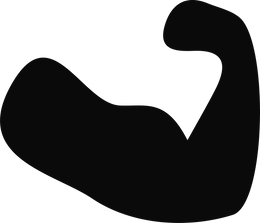 300.000+ Customers Worldwide
300.000+ Customers Worldwide


